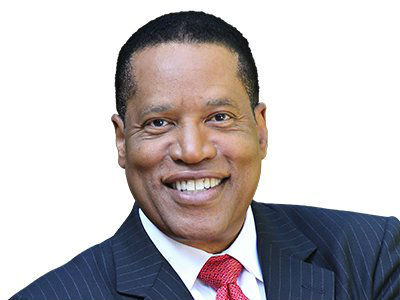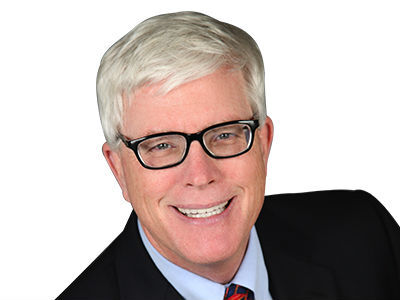The Feast of Tabernacles: The Most Joyous Feast on God’s Calendar
Sponsored Content


Audio By Carbonatix
By Karen Engle, Crosswalk.com
In the final months of His life, Jesus made two remarkable declarations recorded in John. In John 7:37-38, He invited the thirsty to come to Him and promised that those who believe would have “rivers of living water” flow from within them. John explains Jesus was pointing to the Holy Spirit, who would come after His ascension. Then in John 8:12, Jesus declared, “I am the light of the world. He who follows Me shall not walk in darkness, but have the light of life.” Both statements connect to deep Old Testament themes of truth, salvation, and God’s presence. However, to grasp their significance, we must understand the setting in which Jesus was speaking: the Feast of Tabernacles (in Hebrew, Sukkot).
The Feast of Tabernacles in the Old Testament
In Hebrew, the word “feast” is mo’ed, and it means “appointment.” These feasts were set times God chose to meet with His people. Sukkot was the final and greatest of Israel’s seven biblical feasts. It began on the fifteenth day of the seventh month (Tishri, September/October) and lasted seven days, followed by an eighth-day assembly. Instituted in Leviticus 23:39-43, it was both a harvest festival and a reminder of Israel’s wilderness journey, when God’s people lived in temporary shelters with His presence in their midst.
God commanded the people to rejoice, make offerings, and dwell in booths (sukkahs in Hebrew) to remember how He commanded Israel to live in tents when He brought them out of Egypt. Later, when Jerusalem became the chosen dwelling place of God’s name, men were required to travel there to celebrate this feast (Deuteronomy 16:16). Because it recalled God’s presence with His people and anticipated His kingdom, it was the most joyful of the feasts and became known as “The Time of Our Rejoicing.” Sukkot was also tied to the final harvest—the “Feast of Ingathering” (Exodus 23:16)—when wheat, olives, and grapes were brought in, providing bread, oil, and wine. This agricultural ingathering foreshadowed God’s greater harvest of nations.
God Dwelling with His People
The theme of God dwelling with His people goes back to Sinai, where God told Moses: “Let them make Me a sanctuary, that I may dwell among them” (Exodus 25:8). His presence filled the tabernacle and later Solomon’s temple. But when Israel turned to idols, God’s glory departed (Ezekiel 10), and the Babylonians destroyed the temple. Prophets like Ezekiel promised that one day God’s glory would return (Ezekiel 43:1–5). Yet even after the Jewish exiles returned and rebuilt the temple, God’s presence did not visibly return. By Jesus’ day, Jewish people longed for God’s glory to dwell among them again—especially during Tabernacles.
The Feast in the First Century
In the first century AD, Sukkot was a vibrant celebration. Pilgrims filled Jerusalem, erecting sukkahs on rooftops, courtyards, and hillsides. Worship included waving branches and fruit (lulav and etrog) in thanksgiving for the harvest, accompanied by music and rejoicing. But two ceremonies especially shaped the feast: the water-pouring ceremony and the temple-lighting ceremony. Both form the backdrop to Jesus’ words in John 7 and 8.
The Water-Pouring Ceremony
Each morning during the seven-day feast, the priests journeyed to the Pool of Siloam to draw fresh water in a golden flask. They then carried it back to the temple against the backdrop of singing and trumpets sounding and poured the water out along with wine on the altar, singing “Hosanna!” from Psalm 118:25. Isaiah 12:3 was often quoted: “With joy you will draw water from the wells of salvation.” This is what makes the Feast of Tabernacles so profound!
This water libation ceremony was a time of supplication for the rains needed for harvest, as well as a prayer for the outpouring of the Holy Spirit and the “living waters” of salvation. It was on the last and greatest day of the feast, after seven days of this ritual, Jesus stood and cried out:
If anyone thirsts, let him come to Me and drink. Whoever believes in Me, as Scripture has said, rivers of living water will flow from within them. (John 7:37–38)
Jesus was declaring Himself to be the true source of salvation and the fulfillment of the water ceremony. What the priests played out symbolically, year after year, Jesus fulfilled—He was the Living Water, our life-giving Spirit.
The Temple-Lighting Ceremony
Each evening, priests lit giant 75-foot menorahs in the temple courtyard, illuminating Jerusalem. Families celebrated with dancing and music. The lights recalled God’s presence in the wilderness as a pillar of fire and anticipated His glory returning to the temple. Then, on the day after the feast, Jesus declared:
I am the light of the world. Whoever follows Me will not walk in darkness, but will have the light of life. (John 8:12)
His words connected directly to Isaiah 9:2: “The people walking in darkness have seen a great light.” Jesus was claiming to all who could hear He was that promised light, God’s presence shining in the world.
Today, Jewish families still build sukkahs with roofs open to the stars, decorated with fruit. Many eat their meals inside the sukkahs followed by prayers and much singing. During Sukkot, the streets of Jerusalem are filled with families singing in their sukkahs. The Feast of Tabernacles remains a time of joy and thanksgiving for God’s provision.
Future Fulfillment
Like all of God’s feasts, the Feast of Tabernacles points forward to its ultimate fulfillment—when God will again dwell with His people: “My dwelling place will be with them; I will be their God, and they will be my people” (Ezekiel 37:27). Zechariah foretold that in the messianic kingdom, all nations would go up to Jerusalem yearly to celebrate Tabernacles (Zechariah 14:16). But the apostle John envisioned its ultimate reality:
Behold, the tabernacle of God is with men, and He will dwell with them, and they shall be His people. (Revelation 21:3)
On that day, when Jesus returns to rule and reign from Jerusalem, God’s people will no longer hunger or thirst, for the Lamb will shepherd them to fountains of living water, and His light will fill the new Jerusalem forever (Revelation 7:15-17; 22:1-5).
When Jesus proclaimed Himself the “living water” and “light of the world” during Tabernacles, He was declaring that He is the fulfillment of Israel’s deepest hopes—that God’s presence had returned, not to a temple made with hands, but in the person of the Messiah. And one day, when He returns as King, the Feast of Tabernacles will be fulfilled in all its joy, as God gathers His harvest of souls and dwells forever with His people.
Related Podcast:
Photo credit: ©GettyImages/ Ekaterina Markelova / 500px
Karen Engle is the Managing Editor for the International Christian Embassy Jerusalem, USA Branch. She has a master’s in biblical studies and theology with an emphasis in Israel studies and is passionate about teaching about God’s purpose and plan for Israel and the nations.


























